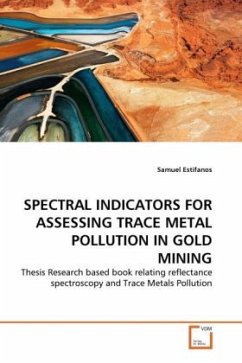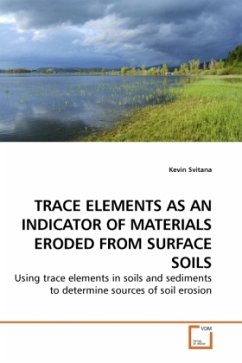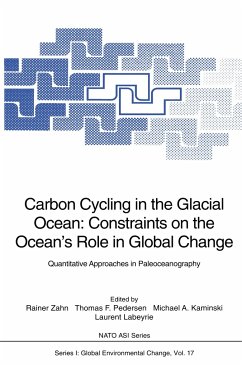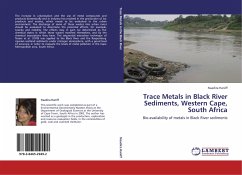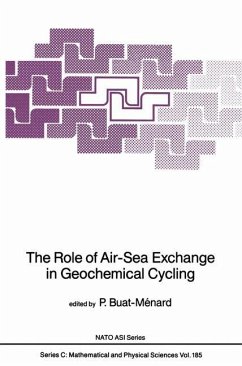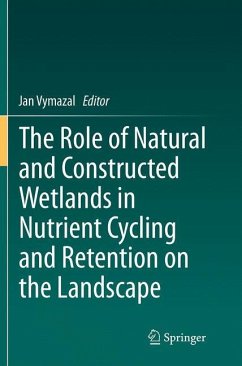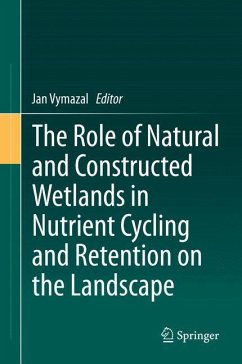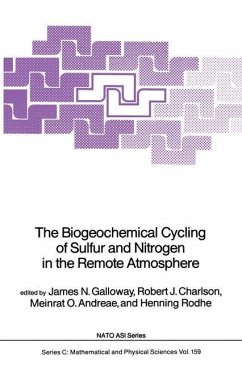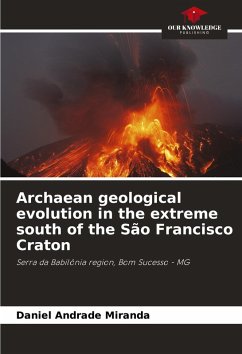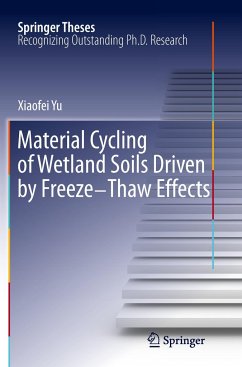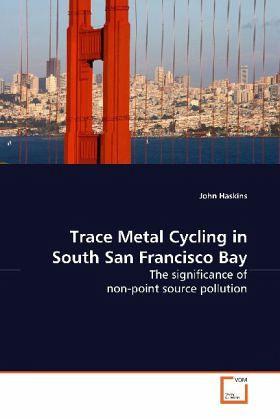
Trace Metal Cycling in South San Francisco Bay
The significance of non-point source pollution
Versandkostenfrei!
Versandfertig in 6-10 Tagen
32,99 €
inkl. MwSt.

PAYBACK Punkte
16 °P sammeln!
The non-point source sediment fluxes of Cd, Cu, andNi from the sediment-water interface in South SanFrancisco Bay are described and compared to knownpoint sources of both anthropogenic and watershedorigins. Fluxes of these metals were determined bybenthic flux chambers and by the mathematicalmodeling of gradients in metal concentrations inpore water taken from sediment cores. Experimentswere also performed to assess benthic macrofaunalcontributions of sediment fluxes using the invasiveAsian clam Potamocorbula amurensis. Because of majorclean-up efforts conducted since the 1970 s fluxes ofconta...
The non-point source sediment fluxes of Cd, Cu, and
Ni from the sediment-water interface in South San
Francisco Bay are described and compared to known
point sources of both anthropogenic and watershed
origins. Fluxes of these metals were determined by
benthic flux chambers and by the mathematical
modeling of gradients in metal concentrations in
pore water taken from sediment cores. Experiments
were also performed to assess benthic macrofaunal
contributions of sediment fluxes using the invasive
Asian clam Potamocorbula amurensis. Because of major
clean-up efforts conducted since the 1970 s fluxes of
contaminants from point sources have decreased
significantly yet metal contamination remain high.
Fluxes from non-point sources must comprise a
significant source to the South Bay waters. The
addition of clams reversed the direction and
increased the magnitude of the fluxes of these
metals. These data suggest 1) non-point sources such
as sedimentary flux is important and 2) that invasive
species such as P. amurensis, can have profound
affects on benthic bioirrigation in the sediments due
to burrowing and feeding generating exchange of
pore waters with the overlying water column.
Ni from the sediment-water interface in South San
Francisco Bay are described and compared to known
point sources of both anthropogenic and watershed
origins. Fluxes of these metals were determined by
benthic flux chambers and by the mathematical
modeling of gradients in metal concentrations in
pore water taken from sediment cores. Experiments
were also performed to assess benthic macrofaunal
contributions of sediment fluxes using the invasive
Asian clam Potamocorbula amurensis. Because of major
clean-up efforts conducted since the 1970 s fluxes of
contaminants from point sources have decreased
significantly yet metal contamination remain high.
Fluxes from non-point sources must comprise a
significant source to the South Bay waters. The
addition of clams reversed the direction and
increased the magnitude of the fluxes of these
metals. These data suggest 1) non-point sources such
as sedimentary flux is important and 2) that invasive
species such as P. amurensis, can have profound
affects on benthic bioirrigation in the sediments due
to burrowing and feeding generating exchange of
pore waters with the overlying water column.



